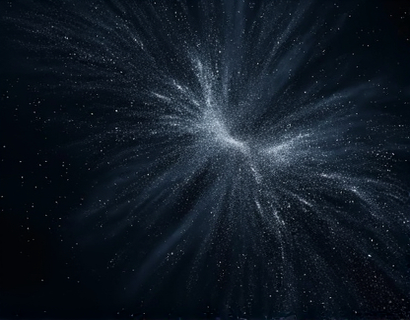Unlocking the Universe: In-Depth Insights for Curious Minds
Embarking on a journey to understand the vast and intricate universe of knowledge is an endeavor that ignites the spirit of curiosity in every individual. This comprehensive resource serves as a beacon for those who seek to expand their horizons and delve into the depths of cosmic knowledge. Here, we invite you to explore a meticulously curated collection of insightful articles and current insights designed to spark your imagination and deepen your understanding of the world around us.
The universe, in its vastness, presents an endless array of mysteries waiting to be unraveled. From the smallest subatomic particles to the largest cosmic structures, each element holds a story that contributes to the grand narrative of existence. This platform is dedicated to bringing these stories to life, offering a multifaceted view of topics that range from the fundamental laws of physics to the latest discoveries in astronomy and beyond.
Exploring the Fundamentals of the Universe
The journey begins with an exploration of the fundamental principles that govern our universe. Physics, the science of matter and energy, provides the foundation for understanding the cosmos. From classical mechanics to quantum theory, each branch of physics offers unique insights into the workings of the universe.
Classical mechanics, developed by giants like Newton and Einstein, describes the motion of objects and the forces acting upon them. This branch of physics lays the groundwork for understanding everything from the trajectory of a thrown ball to the orbits of planets. However, as we delve deeper into the microscopic world, the rules of classical physics give way to the strange and counterintuitive realm of quantum mechanics.
Quantum mechanics reveals a universe where particles can exist in multiple states simultaneously and where the act of observation can alter the state of a system. This paradigm shift challenges our intuitive notions of reality and opens up new avenues for technological advancements, such as quantum computing and cryptography.
Astronomy: Windows to the Cosmos
Astronomy, the study of celestial objects and phenomena, provides a direct window into the universe. Through telescopes and other observational tools, astronomers uncover the secrets of stars, galaxies, and the vast expanse of space. Each discovery adds a new piece to the puzzle, helping us understand the evolution and structure of the cosmos.
The study of stars is central to our understanding of the universe. Stars are the cosmic furnaces where elements are forged and where the processes that power the universe unfold. From the life cycles of stars to the formation of planetary systems, each aspect of stellar astronomy contributes to a broader comprehension of cosmic dynamics.
Galaxies, vast collections of stars, gas, and dark matter, are the building blocks of the universe. Observations of galaxies at various stages of their evolution provide insights into the large-scale structure of the cosmos and the forces that shape it. The study of galaxy clusters and superclusters reveals the underlying gravitational forces that govern the distribution of matter in the universe.
Cosmology: The Study of the Universe's Origin and Fate
Cosmology, the branch of astronomy that deals with the origin, evolution, and eventual fate of the universe, is a field that combines theory and observation to answer some of the most profound questions about our existence. The Big Bang theory, supported by extensive evidence, posits that the universe began as a hot, dense state and has been expanding ever since.
One of the key pieces of evidence for the Big Bang is the cosmic microwave background radiation, a faint glow of light that fills the universe and is a remnant from the early stages of cosmic history. This radiation provides a snapshot of the universe when it was just 380,000 years old, offering a glimpse into the conditions that prevailed at that time.
Understanding the composition of the universe is crucial for cosmology. Observations indicate that the universe is composed of approximately 5% ordinary matter, 27% dark matter, and 68% dark energy. Dark matter, which does not interact with electromagnetic radiation, plays a vital role in the formation and structure of galaxies. Dark energy, a mysterious force that causes the accelerated expansion of the universe, remains one of the greatest unsolved mysteries in physics.
Exoplanets and the Search for Life
The discovery of exoplanets, planets orbiting stars outside our solar system, has revolutionized our understanding of planetary systems and the potential for life beyond Earth. With thousands of exoplanets confirmed, each discovery brings us closer to answering the age-old question: Are we alone in the universe?
Exoplanet hunting involves sophisticated techniques, including the transit method, which detects the slight dimming of a star as a planet passes in front of it, and the radial velocity method, which measures the wobble of a star caused by the gravitational pull of an orbiting planet. These methods have led to the discovery of diverse planetary systems, some of which resemble our own solar system, while others are vastly different.
The search for life on exoplanets is an exciting frontier in astrobiology. The presence of habitable zones, regions around a star where conditions might allow for liquid water to exist, is a key factor in identifying potentially habitable worlds. The detection of biosignatures, such as specific atmospheric gases, could provide evidence of biological activity on these distant worlds.
Black Holes: Gates to the Unknown
Black holes, regions of spacetime where gravity is so strong that nothing, not even light, can escape, are among the most enigmatic objects in the universe. These cosmic phenomena are the endpoints of massive stars and play a crucial role in the dynamics of galaxies.
The event horizon, the boundary beyond which nothing can return, marks the point of no return for a black hole. Inside the event horizon, the laws of physics as we know them break down, leading to the concept of a singularity, a point of infinite density and curvature.
Recent observations, such as the Event Horizon Telescope's image of the black hole in the galaxy M87, have provided unprecedented insights into the nature of these objects. These images not only confirm the theoretical predictions of general relativity but also open up new avenues for studying the extreme conditions near black holes.
The Future of Cosmic Exploration
The quest to understand the universe is far from over. Advances in technology and new missions are set to revolutionize our knowledge in the coming decades. Space telescopes like the James Webb Space Telescope and future missions to explore the outer reaches of our solar system and beyond promise to uncover new secrets of the cosmos.
Interstellar travel, once the domain of science fiction, is becoming a more plausible goal with the development of advanced propulsion technologies. The idea of sending probes or even humans to nearby star systems challenges our current understanding of physics and engineering but holds the potential to expand our presence in the universe.
As we continue to explore and learn, the importance of collaboration and open access to information cannot be overstated. Platforms like this one serve as a hub for sharing knowledge and fostering a community of curious minds dedicated to unraveling the mysteries of the universe.
Join us on this journey of discovery and growth. Whether you are a seasoned scientist or a curious enthusiast, there is always more to learn and explore. Together, we can push the boundaries of human knowledge and deepen our understanding of the cosmos.










































